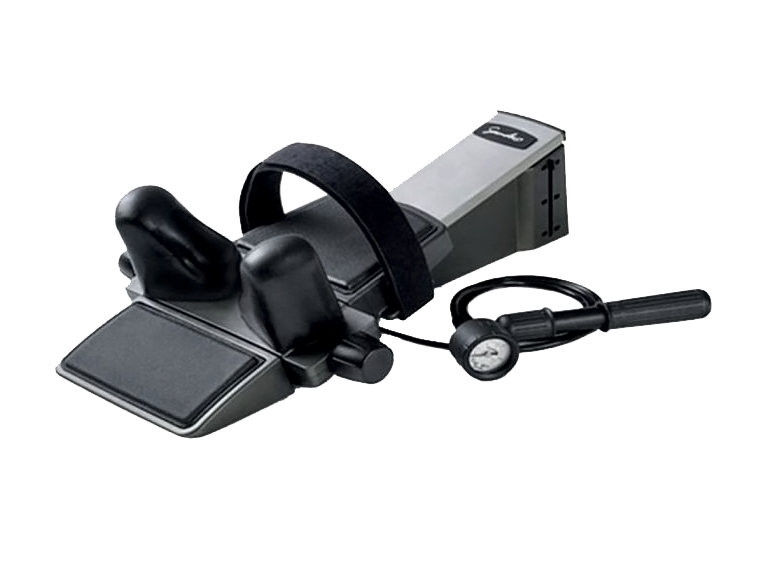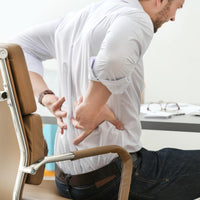
|
Definition: Tommy John surgery, formally known as ulnar collateral ligament (UCL) reconstruction, is a surgical procedure aimed at repairing a torn UCL in the elbow. This ligament is vital for elbow stability, especially for athletes in overhead-throwing sports like baseball. Science: The procedure involves replacing the damaged UCL with a tendon graft. Surgeons typically harvest the graft from the patient's body (such as the forearm or hamstring) or a donor. The new tendon is then threaded through drilled holes in the bones of the forearm and upper arm to reconstruct the ligament. The entire process usually takes 45 to 90 minutes and is often conducted as an outpatient surgery, allowing the patient to return home the same day. Examples in Action:
Fun Fact: Tommy John, the baseball pitcher who first underwent the surgery, won more games after the procedure than before, showcasing its potential effectiveness. However, he has voiced concerns about the growing trend of young athletes having the surgery, advocating for less intense youth sports to prevent injuries. |
Key Takeaways
- Understand Tommy John Surgery: Ulnar collateral ligament (UCL) reconstruction repairs a torn elbow ligament, restoring stability critical for athletes and others needing repetitive arm motion.
- Recognize UCL Injury Symptoms: Persistent elbow pain, reduced throwing power, and a popping sensation are indicators; timely medical evaluation can prevent further complications.
- Consider Recovery and Rehabilitation: Recovery spans 12-18 months, requiring phased physical therapy; diligent rehab is essential for a successful return to pre-injury levels.
Tommy John Surgery, officially known as ulnar collateral ligament (UCL) reconstruction, is a surgical procedure to repair a torn ligament inside the elbow. This ligament, located on the inner side of the elbow, is crucial for stabilizing the joint during repetitive, forceful motions—especially the kind of throwing action common in sports like baseball. The surgery got its name after baseball pitcher Tommy John, the first professional athlete to undergo the procedure in 1974, ultimately allowing him to continue his career.
In the procedure, a surgeon removes the damaged UCL and replaces it with a healthy tendon taken from another part of the patient’s body, usually from the forearm, hamstring, or foot. The grafted tendon is threaded through holes drilled in the humerus and ulna (the bones of the upper and lower arm), allowing the elbow to regain stability over time. Recovery is intensive, often requiring 12 to 18 months of rest and physical therapy. Still, the success rate is high, and many athletes can return to their previous level of performance.
The Anatomy Of The Elbow: Understanding The Ulnar Collateral Ligament
The Foundation Of The Elbow
To truly understand Tommy John surgery, we must first delve into the intricate anatomy of the elbow joint. This complex joint is composed of three bones: the humerus (upper arm bone), the ulna (inner forearm bone), and the radius (outer forearm bone). These bones work in harmony, allowing for a wide range of motion, from simple bending to the powerful throwing motion.
The Crucial Role Of The Ulnar Collateral Ligament (UCL)
At the inner aspect of the elbow, a vital ligament known as the Ulnar Collateral Ligament (UCL) plays a pivotal role. This ligament is a strong, fibrous tissue band connecting the humerus to the ulna. Its primary function is to stabilize the elbow joint's medial (inner) side, especially during forceful valgus stress, such as the throwing motion.
The Impact Of UCL Injury
When the UCL becomes damaged or torn, it can lead to significant pain, instability, and a loss of elbow function. This is particularly problematic for athletes who rely on repetitive throwing motions, such as baseball pitchers, tennis players, and javelin throwers.
The Need For Tommy John Surgery
In severe cases of UCL injury, surgical intervention, known as Tommy John surgery, may be necessary to repair the damaged ligament. This procedure involves replacing the torn UCL with a tendon graft harvested from another body part, such as the hamstring or forearm. By reconstructing the ligament, surgeons aim to restore stability to the elbow and allow athletes to return to their sport.
Common Causes Of UCL Injuries: Is Tommy John Surgery Right For You?
Tommy John surgery, medically known as ulnar collateral ligament (UCL) reconstruction, has emerged as a hope for athletes, especially baseball pitchers, grappling with UCL injuries. The frequent, high-velocity throwing motions inherent in sports can exert undue stress on the elbow's structures, making UCL injuries a common predicament among athletes. However, it's not solely athletes who are at risk; individuals engaged in occupations or activities requiring repetitive elbow stress can also be susceptible.
The UCL, a crucial elbow stabilizer, can become strained or torn through several mechanisms, leading to pain, instability, and decreased performance. The most common causes of UCL injuries include:
- Repetitive Stress: Continuous elbow overuse, especially in sports that require overhead throwing motions like baseball, softball, javelin throw, and tennis, can gradually wear down the UCL.
- Acute Trauma: A sudden blow or twist to the elbow during physical activity can immediately tear the UCL.
- Degenerative Changes: Natural wear and tear over time can weaken the UCL, making it more prone to injury, even during routine activities.
Deciding If Tommy John Surgery Is Right for You
The decision to undergo Tommy John surgery is significant and should be made after thorough consultation with healthcare professionals. Here are some considerations to keep in mind if you're facing this decision:
- Severity of the Injury: Tommy John surgery is typically recommended for complete tears or significant injuries that do not respond to conservative treatments like physical therapy and rest.
- Impact on Lifestyle or Career: Surgery may offer the best chance to return to pre-injury performance levels for athletes and professionals whose careers depend on optimal elbow function.
- Long-Term Health and Mobility Goals: It's important to weigh the surgery's potential benefits in restoring elbow stability and strength against the extensive recovery time and rehabilitation.
Signs And Symptoms Of UCL Injury: When To Consider Surgery
Understanding the indicators of an ulnar collateral ligament (UCL) injury is crucial in determining the right time to consider Tommy John surgery. This knowledge not only aids in prompt intervention but also ensures a more effective recovery process. Here's a comprehensive overview of key signs and symptoms that indicate when Tommy John surgery might be necessary:
- Persistent Elbow Pain: A hallmark sign of a UCL injury is a consistent, throbbing pain in the inner part of the elbow. This discomfort is most pronounced during actions that stress the elbow, such as throwing.
- Decreased Performance in Throwing Athletes: Athletes, particularly those involved in throwing sports like baseball, may notice a significant drop in their throwing velocity or an inability to throw with their usual precision. This decline in performance often signals a compromised UCL.
- Swelling and Inflammation: Swelling around the elbow joint, accompanied by warmth and tenderness to touch, can indicate a UCL injury. Although inflammation is a natural response to injury, persistent swelling is a concern that requires professional assessment.
- A Popping Sensation: Some individuals experience a distinct popping sensation in the elbow when they are injured. This sensation often accompanies acute UCL injuries and should prompt immediate medical evaluation.
- Instability in the Elbow: Feeling like the elbow is "giving way" or an overall sense of instability during arm movements indicates a potentially serious UCL injury. This instability can interfere with daily activities and athletic performance.
- Limited Range of Motion: Difficulty in fully extending or flexing the arm without pain is another sign that the UCL may be damaged. This reduced range of motion can affect sports participation and routine tasks.
If you're experiencing any of these symptoms, it's important to seek a professional evaluation to determine the extent of the injury.
What Happens During Tommy John Surgery? A Step-By-Step Breakdown
Tommy John surgery, also known as ulnar collateral ligament (UCL) reconstruction, is a surgical procedure that aims to repair a torn ulnar collateral ligament inside the elbow. This injury is common among baseball pitchers but can also occur in other athletes and individuals. Understanding the steps involved in Tommy John surgery can provide clarity and comfort to those facing this procedure.
Preoperative Preparations
Before the surgery, patients will undergo a comprehensive evaluation, including a medical history review, physical examination, and imaging tests. These steps are crucial to confirm the diagnosis and plan the procedure.
Anesthesia
Tommy John surgery is typically performed under general anesthesia, meaning the patient will be asleep and free from pain throughout the operation.
Creating The Graft
The surgeon begins the procedure by choosing a tendon to use as a graft. This graft may come from the patient's body (autograft), typically the forearm or hamstring, or from a donor (allograft). The chosen tendon will replace the damaged ulnar collateral ligament.
Preparing The Elbow
A small incision is made along the elbow to access the joint. Any damaged tissue is removed to prepare for the graft.
Grafting Process
Small holes are drilled into the ulna and humerus bones on either side of the elbow joint. The surgeon then threads the graft tendon through these holes, miming the original ligament's path. This step is critical for restoring normal elbow function.
Securing The Graft
Once the graft is correctly positioned, it is secured to the bones using screws or other fixation devices. This stabilizes the graft, allowing it to integrate with the surrounding bone.
Closing The Incision
After securing the graft, the surgeon stitches or staples the incision closed. The area is then covered with a dressing to protect the wound while it begins to heal.
Postoperative Care
Immediately following the surgery, patients start a recovery process that includes pain management, rest, and, eventually, physical therapy. This phase is crucial for regaining strength and flexibility in the elbow.
Rehabilitation After Tommy John Surgery: What To Expect
Recovering from Tommy John surgery, a common orthopedic procedure to repair a torn ulnar collateral ligament (UCL) inside the elbow, involves a meticulous and phased rehabilitation process. Understanding what to expect during the recovery period can significantly affect the outcome and speed of recovery. Here’s a closer look at the stages of rehabilitation post-Tommy John surgery.
Initial Recovery Phase
The journey to full recovery begins immediately after surgery. During the first few weeks, the primary focus is reducing swelling and pain while protecting the integrity of the newly repaired ligament. This phase typically involves wearing a brace or splint to immobilize the elbow, combined with gentle range-of-motion exercises to encourage flexibility without straining the healing ligament.
Gradual Mobilization
Physical therapy gradually introduces more active exercises to increase the range of motion as healing progresses. At this stage, it's crucial to adhere to the guidance provided by healthcare professionals to avoid putting undue stress on the repair. Typically, this phase lasts several weeks and is critical for laying the foundation for more strenuous activities in later stages.
Strengthening Phase
Following successful mobilization, the focus shifts towards strengthening the muscles around the elbow, forearm, and shoulder. Strengthening exercises are carefully monitored and increased in intensity according to the individual's tolerance and recovery progress. This phase is essential for restoring strength and function to the affected arm.
Advanced Activities And Return To Play
The final rehabilitation phase involves gradually introducing sport-specific activities or tasks related to the patient's goals. This stage is highly personalized and depends on the individual's progress, the nature of the sport, or the physical demands of their activities. Total return to competitive sports or strenuous activities typically occurs several months after surgery once the individual has regained adequate strength, flexibility, and confidence in the repaired elbow.
Final Thoughts
Tommy John surgery has become a pivotal solution for athletes and individuals suffering from UCL injuries, particularly those whose lives or careers rely on full elbow mobility and stability. By restoring the elbow’s structural integrity, this procedure offers a second chance to regain performance levels and continue engaging in high-stakes physical activities. However, the decision to undergo Tommy John surgery should involve thorough medical consultations, considering both the extensive recovery time and potential risks. If you’re experiencing symptoms indicative of UCL injury, early intervention and appropriate medical guidance can significantly impact long-term outcomes.
Experience faster recovery and enhanced comfort with OrthoBracing's range of premium recovery aids. Whether recovering from surgery, managing an injury, or looking to support your athletic performance, our braces and cold therapy machines provide the relief you need to get back to doing what you love.
Don’t settle for less when it comes to your recovery—trust in OrthoBracing’s top-quality, doctor-recommended solutions to make a real difference in your journey to recovery. Explore our selection and discover the support you need to get moving again confidently.
Read also:
- How To Do Cold Therapy At Home: Simple And Effective Methods
- Heat vs. Cold Therapy: When To Use Each For Healing
- How To Use A Game Ready Ice Machine: Step-By-Step Guide
Frequently Asked Questions About Tommy John Surgery
Why is the surgery named after Tommy John?
Tommy John surgery is named after Tommy John, a pitcher in Major League Baseball who was the first person to undergo the procedure in 1974 successfully. This surgical operation was revolutionary at the time and has since then helped countless athletes continue their careers after what previously might have been career-ending injuries
How long is the recovery time after Tommy John surgery?
The recovery time following Tommy John surgery can vary significantly, depending largely on the individual's physical condition, the extent of the damage, and their adherence to the rehabilitation program. Typically, it takes 12 to 18 months before athletes can return to their previous level of competitive play. While some may return to competition sooner, this timeline ensures a thorough and robust recuperation.
Are there alternatives to Tommy John surgery?
Yes, there are alternatives to Tommy John surgery, focusing primarily on non-surgical treatments such as physical therapy, platelet-rich plasma (PRP) injections, and stem cell therapy. These alternatives aim to heal the ligament through natural processes. However, their effectiveness can vary, and in cases of complete tears or severe damage, Tommy John surgery might still be the recommended option.
What are the risks associated with Tommy John surgery?
As with any surgical procedure, Tommy John surgery comes with several risks. These can include infection, nerve damage, decreased range of motion, and the possibility of the surgery not fully resolving the issues with the ligament. Furthermore, as with all surgeries, there's always a risk that the outcome may not meet the patient's expectations regarding performance and ability post-recovery.
Is Tommy John surgery covered by insurance?
In many cases, Tommy John surgery is covered by insurance, especially if deemed medically necessary. However, coverage details can vary significantly among insurance providers and plans, so it's crucial for patients to consult their insurance policy or contact their providers directly to understand the coverage specifics, including any deductibles or copayments.
How can one prevent injuries that may lead to Tommy John surgery?
Preventing injuries that may lead to Tommy John surgery involves a combination of proper technique, strength training, adequate rest, and pitch count regulation for baseball pitchers. It’s also important for athletes to listen to their bodies and seek early intervention for arm pain or discomfort. Preventative measures can help avoid the need for surgery and support overall arm health and longevity in sports.
























